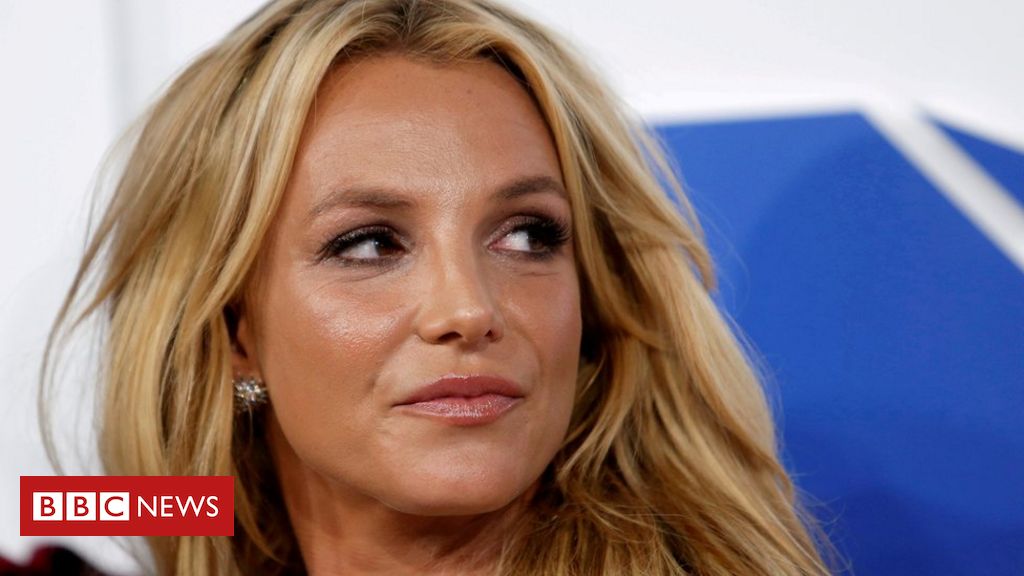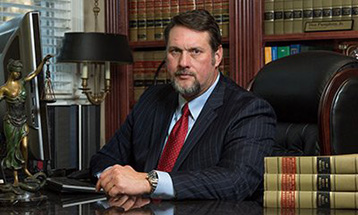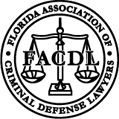- DUI
- Criminal Defense
- Florida DUI
- Traffic Offenses
- Drug Charges
- Marijuana Charges
- Violent Crimes
- Domestic Violence
- Temporary Injunctions
- Weapons Charges
- Theft Crimes
- White Collar Crime
- Juvenile Offenses
- Sex Crimes
- Violation of Probation
- Early Termination of Probation
- Seal or Expunge Criminal Record
- Criminal Appeals
- US Federal Offenses
- Misdemeanor Charges
- Felony Charges
- Co-Defendant Cases
- College Student Defense
- College Student Hearings
- FSU Students
- FAMU Students
- Florida Panhandle Arrests
- Extradition to Florida
- Bench Warrants / Warrants
- Emergency Bond Hearings
- Gambling Charges
- Drone Arrests
- Marsy’s Law
- UAS Infractions
- Introduction of Contraband
- Lying to Police
- Locations
- Case Results
- Our Firm
- Media
- Resources
- Blog
- Contact Us
Unraveling the Details of Britney Spears’ Abusive Conservatorship
July 7, 2021 Don Pumphrey, Jr. Criminal Defense, News & Announcements Social Share
Since 2008, a year when the world watched Britney Spears suffer harrowing public breakdowns that led to her being put under a 5150 involuntary psychiatric hold, she has been under the conservatorship of her dad, Jamie Spears. Memes have scoured the internet of her shaving her head with a sly manic grin, as well as her attacking the paparazzi with an umbrella.[1] These moments depicting both panic and emotional vulnerability have been used to fuel her conservatorship and act as a tool of public mockery that Britney Spears cannot seem to outrun. It’s disturbingly ironic – shaving her head in front of paparazzi, an act of rebellion fueled by years of people micro-managing every detail of her appearance as a child, teenager, and young adult, is what gave her conservators the legal right to manage every detail of her life as a grown woman. Under this conservatorship, Jamie, as well has her lawyer, have had full control of her estate, financial assets, and personal assets.[2]
What is a Conservatorship?
In California, a conservatorship is a court case in which a judge appoints a responsible person or organization (called the “conservator”) to care for another adult (called the “conservatee”) who cannot care for himself or herself or manage his or her own finances.[3] Although there are different kinds of conservatorships, they are most often utilized to care for the elderly, young people who have been seriously physically impaired, or adults with developmental disabilities.[4] When you unravel what conservatorships entail and who they are meant to protect, it leads us to question why this was enacted to begin with, let alone how it lasted over a decade. After all, many people suffer from mental health issues and are institutionalized to deal with them. Very rarely do we hear about those individuals being stripped of the right to control their affairs, especially for so many years. In Britney’s case, the terms of the conservatorship have not been made public.[5] Alarmingly, a lawyer who said he represented Britney in 2009 to try to end her conservatorship stated that he was denied by the judge, as Britney’s “conservatorship terms wouldn’t allow her to hire him.”[6]
A Brief Overview of Conservatorships in Florida
Chapter 747 of the Florida Statutes governs conservatorships. Similar to California, a conservatorship in Florida occurs when the court appoints someone (called the “conservator”) to manage the estate of another person (called the “absentee”).[7] Conservatorships are most often used when someone’s family member has gone missing and is presumed dead. If such circumstances exist, a petition for conservatorship may be filed. The conservator “shall have all the rights, powers, and duties of a guardian of the property as established in chapter 744.”[8] Under chapter 744, a guardianship is a legal proceeding during which a guardian is appointed to exercise the legal rights of someone who is incapacitated (called the “ward”). An incapacitated person is “an adult who has been judicially determined to lack the capacity to manage at least some of his or her property or to meet at least some essential health and safety requirements of a person.[9]
A Timeline of Britney’s Conservatorship
Until recently, Britney has remained relatively silent over the 13 years of her conservatorship, however, the #FreeBritney movement has been loudly trying to bring attention to the abusive nature of the conservatorship on her behalf since its implementation.[10] Although the fan site centered on the campaign has been active since 2009, her supporters expressed concern again in 2019 when she was admitted into a mental-health facility.[11] Up until then, she had dropped an album every two to three years, had a four-year Las Vegas residency, went on multiple tours that grossed millions, launched clothing and perfume lines, and served as a judge on “The X Factor”.[12] Around this time, Britney’s lawyer resigned, leaving her father as the sole conservator.[13] In 2019 and 2020, Britney asked multiple times for the judge to consider ending her conservatorship or, at least, open up parts of it.[14] In contrast, her father requested to extend the conservatorship to more than ten different states.[15] Those leading the #FreeBritney movement were also silenced and faced lawsuits by Jamie for spreading false information.[16] However, this didn’t stop them from aiding in the production of Framing Britney Spears, a documentary by the New York Times streaming on Hulu that examines how the public relished in watching the global superstar unravel, but had very little interest in questioning why a seemingly normal, productive, and successful adult was held in the confines of a legal conservatorship. The documentary featured interviews with her lifelong friends, marketing executives throughout her career, and lawyers, ultimately creating a “#FreeBritney frenzy among celebrities, fans, and Spears’ loved ones alike.[17] Less than a week later, the court ruled against Jamie’s wishes and implemented a co-conservatorship with Bessemer Trust so the powers he had over his daughter’s estate would be vastly reduced.[18] Four months later, the New York Times obtained court documents revealing that Britney had opposed her conservatorship for nearly a decade, articulating that she had no control over her life and her father was immeasurably abusing his power.[19]
A Public Cry for Help
Britney spoke for herself in her conservatorship case for the first time in 13 years on June 23rd, 2021. For nearly 24 minutes, Britney begged the court to end her conservatorship, giving the public a glimpse of what her life has looked like under its shackles. Her testimony included her struggles with mental health, how she was forced to work and perform against her will, and how her father found immense joy in controlling her life even though he knew it was causing her irreparable mental and physical pain.[20] She stated that “it’s my wish and dream for all of this to end.”[21] Additionally, she revealed that she had little to no privacy, had no say in her work schedule, and was not allowed to fulfill her wishes of getting married and having a baby.[22] A day after her testimony, she got on Instagram to make a public apology for remaining silent during her conservatorship, saying “I apologize for pretending like I’ve been ok the past two years…I did it because of my pride and I was embarrassed to share what happened to me.”[23] On June 30th, the presiding judge denied a motion filed by Britney’s lawyer to have her father removed from
his role as conservator of her estate.[24] Consequently, her lawyer is planning to file a petition to end her conservatorship, while Jamie’s lawyers have submitted filings to investigate the claims Britney made in her testimony, specifically her statements that she was forced to perform and take medications against her will.[25]
The #FreeBritney Movement is Really a Disability Rights Issue
Columnist and author Liz Plank said it best when she tweeted “Want to #FreeBritney? Welcome to the disability rights revolution so glad you’re here.”[26] In the tweets that follow, she describes that we shouldn’t be shocked by the fact that Britney is being forced to keep her IUD, a method of birth control, as women with disabilities are still being sterilized in the United States today.[27] In fact, such a practice is rooted in this nation’s history. The United States was the first country to undertake sterilization for eugenic purposes.[28] In the famous case of Buck v. Bell, the Supreme Court permitted the forced sterilization of a woman they deemed “feeble minded” by stating “three generations of imbeciles are enough.”[29] As a result, more than 60,000 people were sterilized in 32 states during the 20th century, with immigrants, people of color, poor people, unmarried mothers, and disabled individuals being the prime targets of these sterilization programs.[30] Sterilization debates continue in regard to these populations, and although some protections have emerged, they simply are not enough. Such protections include Medicaid laws that require specific consent forms before sterilization procedures, and the Federal Public Health Law Title 42 that regulates the use of sterilization procedures on institutionalized individuals, “ban[ning] the use of federal funds for inmate sterilization and various state statutory enactments.”[31] However, there still has not been a “sweeping declaration by the Supreme Court ruling eugenics or forced sterilization [is] unconstitutional.”[32]As a result, Buck v. Bell is still good law today and allows for disabled women to be sterilized against their will. Robyn Powell, a disability scholar and Professor at Stetson University College of Law, has experienced first-hand the effect of these lapses in imperative legislation, stating:
“As a woman with a significant disability, I have been offered a hysterectomy more times than I can count. This has been done based on assumptions about my reproductive desires rather than medical necessity.”[33]
In addition, the tweets from Liz Plank highlight that we, as a society, should not be shocked that Britney lost access to her own children, “as mothers with disabilities have removal rates that can be as high as 80%, and 13% of parents with physical disabilities report experiencing discrimination in custody cases because of it.”[34] The Americans with Disabilities Act (ADA) defines disability as a physical or mental impairment that substantially limits one or more major life activities, a person who has a history or record of such impairment, or a person who is perceived by others as having such an impairment.[35] Even if Britney doesn’t identify as a disabled person, the law has recognized and continued to treat her as such. Despite her fame and notoriety, she has not been left unscathed by the reproductive oppression that haunts so many disabled women.
Is this a Case of Labor Trafficking?
During Britney’s testimony, she made a pivotal connection between what she has undergone and the world of human trafficking. She stated, “I worked seven days a week, no days off, which in California, the only similar thing to this is called sex trafficking. Making anyone work against their will, taking all their possessions away – credit card, cash, phone, passport – and placing them in a home where they work with the people who live with them.”[36] Although Britney didn’t allege she was forced into sexual servitude, the allegations made against her father
and team who forced her to work against her will and endure inhumane working conditions, such as being forced to perform with a 102-degree fever she publicly informed a crowd of thousands of at her Las Vegas show, lead us to question if this is a case of forced labor.[37] Under federal anti-trafficking laws, labor trafficking is “the recruitment, harboring, transportation, provision, or obtaining of a person for services, through the use of force, fraud, or coercion for the purposes of subjection to involuntary servitude, debt peonage, debt bondage, or slavery.”[38] To identify cases of human trafficking, investigators look for the elements of an act, a means of force, and a purpose.[39] An act includes movements like harboring or transportation; a means of force includes threat, use of force, coercion, or deceit; and the purpose must center around exploitation, such as sexual exploitation or to profit from the forced labor of someone else. Codified in the California Penal Code, anyone “who deprives or violates the personal liberty of another with the intent to obtain forced labor or services, procure or sell the individual for commercial sex, or exploit the individual in obscene matter, is guilty of human trafficking.”[40] Britney’s classification as a labor trafficking victim rests primarily on the existence of coercion in her abuse, and whether that coercion rises to the legal standard necessary. The purpose of her forced performances is to generate money, and the question of who is benefitting from her labor is clear. According to a New York Times Report, Jamie makes “about $16,000 per month as her conservator, receiv[es] $2,000 a month to rent an office space and receive[s] a percentage of his daughter’s business profits.”[41] Although most human trafficking victims aren’t world renowned popstars, the fact that her credit card, passport, and phone were all taken away are practices that are eerily similar to the typical labor trafficking victim. Often, traffickers will take advantage of individuals with difficult immigration or financial situations and hold their immigration or housing status over their head as a way to maintain control.[42] Despite Britney’s Las Vegas residency garnishing millions of dollars, she was only allowed a $2,000 weekly allowance.[43] The fact that she is not allowed access to her money grossly parallels the common labor trafficking situation wherein the trafficker never pays the victim their earned wages and, instead, states that their wages are being withheld to pay for their basic necessities, like food or housing. In addition, it resembles debt bondage or peonage, wherein a worker’s wages are withheld to pay off a debt that can ultimately never be paid, “as the value of their work invariably becomes greater than the original sum of money borrowed.”[44] Although it’s clear that Britney was exploited for her fame, whether or not that exploitation was underlined by a means of force coercive enough to trigger a labor trafficking violation is something that can only be determined with more information.
Individuals with disabilities, specifically women, are at a heightened risk of becoming trafficking victims. Women and girls are significantly more likely to experience human trafficking abuse than their male counterparts, and when you add in the vulnerabilities that underlie the experience of those with disabilities, a perfect storm brews. Britney Spears has weathered this storm in front of millions of people, leading the public to grapple with a question that should have been answered years ago – if such abuse can happen to her on the world’s biggest stage, how many disabled women are suffering from reproductive injustice and human trafficking abuse behind closed doors?
If you would like to read more about the intersection between disability and human trafficking, you can do so here: https://www.pumphreylawfirm.com/blog/the-dangerous-intersection-between-disability-and-human-trafficking/.
*The information on this page is for information purposes and does not constitute legal advice. The attorneys at Pumphrey Law do not practice conservatorship or guardianship litigation. Please click here to locate an attorney in your area.*
This article was written by Sarah Kamide
[1] Hillary Hoffower, Britney Spears Just Asked the Court to End Her “Abusive” 13-Year Conservatorship”, Insider (June 23, 2021, 6:18 PM), https://www.insider.com/inside-britney-spears-conservatorship-freebritney-movement-2020-12.
[2] Id.
[3] California Courts, Section on Conservatorships, The Judicial Branch of Caliofrnia, https://www.courts.ca.gov/selfhelp-conservatorship.htm?rdeLocaleAttr=en (last visited June 6, 2021).
[4] Id.
[5] Women’s Health Editors, The Full Timeline of Britney Spears’ Conservatorship And the #FreeBritney Movement, Explained, Women’sHealth (July 1, 2021), https://www.womenshealthmag.com/life/ a33336398/britney-spears-conservatorship-timeline/.
[6] Hoffower, supra note 1.
[7] Fla. Stat. § 747.01
[8] Fla Stat. § 747.035(1)
[9] The Florida Bar, Consumer Pamphlet: What is Guardianship, The Florida Bar https://www.floridabar.org/public/ consumer/pamphlet030/#WHAT%20IS%20A%20GUARDIAN%3F (last updated May 2018).
[10] Id.
[11] Id.
[12] Id.
[13] Id.
[14] Id.
[15] Id.
[16] Id.
[17] Id.
[18] Id.
[19] Id.
[20] Id.
[21] Jem Aswad, Read Britney Spears’ Full Statement Against Conservatorship: “I Am Traumatized”, Variety (June 23, 2021 3:59 PM), https://variety.com/2021/music/news/britney-spears-full-statement-conservatorship-1235003940/.
[22] Id.
[23] Britney Spears (@britneyspears), Instagram (June 24, 2021), https://www.instagram.com/p/CQhP9A7gIzE/.
[24] Women’s Health Editors, supra note 5.
[25] Id.
[26] Liz Plank (@feministabulous), Twitter (June 24, 2021 7:49 PM), https://twitter.com/feministabulous/status/ 1408210586849185794.
[27] Id.
[28] Ashwin Roy, Ameeta Roy, and Meera Roy, The Human Rights of Women with Intellectual Disability, Journal of the Royal Society of Medicine (Sept. 2012), https://www.ncbi.nlm.nih.gov/pmc/articles/PMC3439660/.
[29] Buck v. Bell, 274 U.S. 200 (1927).
[30] Leita Powers, Whistleblower Complaint Alleging Forced Sterilization in ICE Detention Center, Syracuse Law Review Legal Pulse (Oct. 15, 2020), https://lawreview.syr.edu/could-forced-sterilization-still-be-legal-in-the-us/.
[31] Id.
[32] Id.
[33] David Oliver, Britney Spears Forced IUD Sparks Important Conversations About Disability, Reproductive Rights, USA TODAY (June 24, 2021 2:40 PM EST), https://www.usatoday.com/story/life/health-wellness/2021/06/24/britney-spears-conservatorship-forced-iud-and-disability-reproductive-rights/5333756001/.
[34] Liz Plank (@feministabulous), Twitter (June 24, 2021 7:56 PM), https://twitter.com/feministabulous/ status/1408212376642539532.
[35] 42 U.S.C. § 12102 (2009).
[36] Aswad, supra note 21.
[37] Nicholas Hautman, Video of Britney Spears Saying She Had 102-Degree Fever Onstage Resurfaces, Page Six (June 23, 2021 9:20 AM) https://pagesix.com/2021/06/23/video-of-britney-spears-saying-she-had-fever-onstage-resurfaces/.
[38] 22 U.S.C. § 7102(11)(B).
[39] Haven Orecchio-Egresitz, Britney Spears’ Conservatorship Raises Questions About Forced Labor, Which Experts Say Doesn’t Get Enough Attention in the US, Insider (June 24, 2021 5:44 PM), https://www.insider.com/britney-spears-conservatorship-raises-questions-forced-labor-2021-6
[40] What is Human Trafficking, State of California Department of Justice, https://oag.ca.gov/human-trafficking/what-is.
[41] Orecchio-Egresitz, supra.
[42] Id.
[43] Hoffower, supra note 39.
[44] What is Bonded Labor, Anti-Slavery International, https://www.antislavery.org/slavery-today/bonded-labour/.












